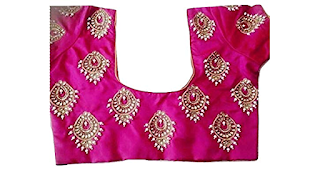The Colorful Evolution of Western Fashion
Introduction
Western fashion has always been a reflection of cultural, social, and historical influences. From classical antiquity to the modern era, the history of western fashion demonstrates the ever-changing tastes, trends, and styles of different periods. In this article, we will take a fascinating journey through the evolution of fashion, exploring the key moments and influences that have shaped the way we dress today.
A Glimpse into Ancient Fashion
During classical antiquity, fashion played a significant role in distinguishing social status and cultural identity. Ancient Greeks and Romans adorned themselves in flowing togas, which not only represented elegance but also indicated the individual's rank and occupation. The vibrant colors of their garments, including royal purple and deep red, were highly sought after and became symbols of wealth and power.
The Middle Ages: Royalty and Ruffles
The Middle Ages witnessed the rise of royal fashion, where opulence and grandeur dominated the wardrobe of the aristocracy. Fashion became a symbol of nobility, and sumptuary laws restricted certain materials, colors, and designs to specific social classes. Richly embroidered gowns, elaborately pleated sleeves, and voluminous skirts adorned with layers of intricate ruffles defined the fashion of this era.
Renaissance: The Era of Elegance
The Renaissance period brought forth a revolution in western fashion. Inspired by the art and culture of ancient civilizations, the clothing of this era encompassed elegance, refinement, and intricate details. The corset, a prominent fashion staple, accentuated the female figure, while voluminous skirts and ornate garments adorned with pearls and precious gems showcased opulence and prosperity.
The Enlightenment and Neoclassical Influence
The Enlightenment era marked a turning point in fashion as simplicity and functionality took precedence over ostentatious displays of wealth. Neoclassical fashion emerged, inspired by the ideals of ancient Greece and Rome. Crisp, clean lines and flowing fabrics replaced the excessive frills and ruffles of the past. The emergence of the tailor-made suit for men and the empire line silhouette for women reflected a shift towards practicality and comfort.
The Roaring Twenties: Flappers and Jazz
The 1920s witnessed an era of liberation and rebellion, with the emergence of the "flapper" fashion style. Women discarded restrictive corsets and embraced short, loose dresses that allowed freedom of movement. The iconic flapper look was characterized by drop-waist dresses, cloche hats, and the revolutionary bobbed haircut. This era epitomized the spirit of the Jazz Age and marked a seismic shift in western fashion.
The Swinging Sixties: Youthful Revolution
The 1960s was a decade marked by social change, political activism, and a radical shift in fashion. Youth culture took center stage, and fashion became a means of self-expression. Mod fashion, characterized by miniskirts, shift dresses, and bold geometric patterns, became a symbol of the 1960s counterculture. This era witnessed the rise of iconic fashion figures such as Twiggy and the influence of designers like Mary Quant.
Hip-Hop and Streetwear: A Cultural Revolution
In the late 20th century, the rise of hip-hop music brought forth a new era of fashion. Streetwear, characterized by baggy jeans, oversized t-shirts, and sneakers, became a symbol of urban culture. The merging of music, fashion, and street art spawned a global fashion movement, transcending boundaries and redefining the traditional notion of style.
Modern Fashion: Sustainability and Individuality
Today, western fashion is characterized by its diversity and emphasis on sustainability. Influenced by global trends and fast fashion, the industry has also witnessed a growing demand for ethical and environmentally conscious practices. Consumers seek individuality through personal style, as fashion becomes a means of self-expression and empowerment.
In conclusion, the history of western fashion is a tapestry of cultural, societal, and historical influences. From the grandeur of ancient Greece to the rebellion of the 1960s, each era has left its unique imprint on the way we dress. As fashion continues to evolve, it reflects the ever-changing attitudes, values, and aspirations of society. So next time you slip on your favorite outfit, remember that you are a part of this colorful evolution.



Comments
Post a Comment